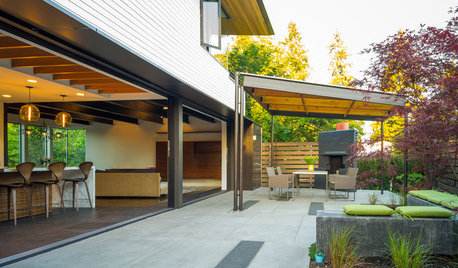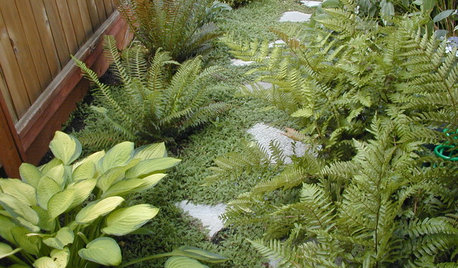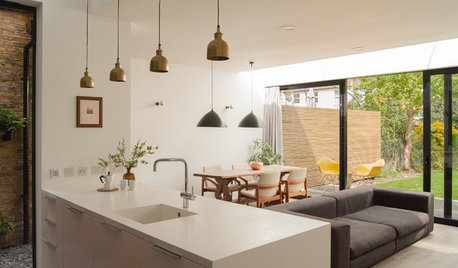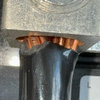I'm wondering if extending a K&T circuit by one outlet is okay GIVEN the following: (sorry to be long, but I'm trying to give all the details I can! I'd rather not be like some people on some forums who post incomprehensible details in separate posts days apart...)
- House built 1947. Recently upgraded service to 100A, had 3 different electricians say that's all they would install, though one did say he COULD install 150 if we particularly wanted it. All three thought the condition of the wiring throughout the house was excellent - two from brief inspection, one from the work he did in the house and some poking around with me out of curiosity. I think he was surprised to see a K&T install in such good shape, honestly. There are no cracks, no brittleness, no insulation falling off, no weird splices in dangerous ways (at least none going to any outlet, switch or light fixture - we've had them all open), etc. Even most of the in-wall runs are covered in intact loom, very little of the insulated wire is visible. *Every* new circuit that's been added runs straight back to the box. No circuit is even overloaded, though we did take out one K&T outlet and run a new (secondary) 20A outlet circuit in the kitchen. No, there is no fill-insulation contact in the attic ;) There was an originally-installed ground to the upstairs bathroom outlet (only one with tub/shower in it), but nothing else has a ground that's original to the house. Electrician remarked that if they'd only run those ground wires to all the outlets, he'd say we had the best of both worlds, safety-wise.
The only place there's any significant deterioration at all is in the outlet boxes, where perhaps 1/3 of the wires (which are still for the most part easily visibly white and black) are having some of their middle cloth insulation fray out. Even in those cases, the rubber insulation is 100% intact, and electrician recommended just cutting off the frayed end and taping the remainder down, extending the tape out somewhat over the rubber-only part as well.
Now that the background's out of the way, the subject at hand:
- One outlet on the wall of one room above the garage, which is being used as an office. Circuit is 20A with #12 wire.
- GFCI installed on the relevant outlet (the others too, but that doesn't matter here). This outlet and two pretty-much-never-used outlets are on this circuit. Electrician verified these three outlets are all that's on the circuit. This outlet is the last one - so there are only 2 wires coming in to it, nothing else.
Yes, I know I don't really need GFCI in an office on a grounded circuit; it's not against code and it's not hurting anything though... I put in GFCI's elsewhere in the house for people-protection due to lack of equipment ground. Yes, I'm aware a GFCI is not equal to an equipment ground, but it's safer than a plain 2-wire outlet! We did install a whole-house surge suppressor at the panel which hopefully will help with equipment-protection in a middling-catastrophic situation - I have no illusions about a lightning strike :)
- This outlet is accessible easily from behind in an eave storage space, due to an easily-removed section of drywall that's not painted or anything - but it is an enclosed space surrounding the studs once the drywall is nailed back into place. Obviously we can only remove it so many times, but we're confident it will survive being put back up after we decide what to do here.
- There is a #12 ground wire there that someone pulled through from below, I'm guessing in the last 10-15 years or so. It's grounding the one outlet here that I'm concerned with. It does not go over to the hallway outlets. I haven't the foggiest idea why it was only run to this one outlet. I have verified this ground does, in fact, run back to the box properly.
What I want to do is: Run 12/2 with ground from the load side of the GFCI (no direct connection to the old wire, just run off the outlet.) Pigtailing at every outlet is not required in my locality. I will, however, obviously pigtail the ground wire to the ground of the GFCI. Then, about 4-5 feet down, I want to install another outlet using the standard 12/2 with ground connection, just as I would for an all-new circuit. If you're wondering, the idea is to get an outlet beyond a very heavy desk that will only go one way ;)
I realize I can pull all new wire up using the existing ground wire as a guide; however, it's attached in some ways that I can't imagine how they got to the wire to attach it. I'm speculating that at one point a wall on the first floor was open, allowing this wire to be attached easily - also, it's not a clear drop to the basement. No fishing with a golf ball here, sadly!
The only reason I'm even considering this is that this circuit is grossly under-loaded, the wire is all in good shape, and I can make a direct box-to-box connection (with the exception of the pigtail ground, which isn't a concern). Since I'm running a ground with it, I'm thinking this should be okay, but wanted to get some advice prior to actually starting to drill holes (of the proper size, in the proper locations, never fear!) in studs.
Sorry to ramble on; any thoughts? I may post this elsewhere to maximize response, so don't get peeved if you read it more than one place ;)
















Ron Natalie
thewgpOriginal Author
Related Discussions
Front Yard Design Help (with pictures)
Q
[Design] Help a complete noob with a complete redo (with pics)
Q
Extending patio
Q
Extending fall bloom
Q
Ron Natalie
thewgpOriginal Author
Ron Natalie
electric_medic
normel
Ron Natalie
thewgpOriginal Author
DavidR
Ron Natalie
brickeyee
Ron Natalie